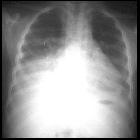intra-abdominal calcification

Bladder
calculus • Bladder stones in augmented bladder - Ganzer Fall bei Radiopaedia

Acute
appendicitis • Appendicitis and appendicolith - Ganzer Fall bei Radiopaedia

Intra-abdominal
calcification • Abdominal calcifications - Ganzer Fall bei Radiopaedia

Peritoneal
calcification • Encapsulating peritoneal sclerosis - Ganzer Fall bei Radiopaedia

Urolithiasis
• Staghorn calculus - Ganzer Fall bei Radiopaedia

Intra-abdominal
calcification • Retroperitoneal hydatid cyst (type III) - Ganzer Fall bei Radiopaedia

Renal
tuberculosis • Renal tuberculosis with autonephrectomy - Ganzer Fall bei Radiopaedia

Intra-abdominal
calcification • Schistosomiasis causing bladder and appendix calcification - Ganzer Fall bei Radiopaedia

Adrenal
calcification • Adrenal calcification - Ganzer Fall bei Radiopaedia

Intra-abdominal
calcification • Ovarian dermoid - Ganzer Fall bei Radiopaedia

Intra-abdominal
calcification • Calcified renal lesion - Ganzer Fall bei Radiopaedia

Intra-abdominal
calcification • Failed renal transplants - Ganzer Fall bei Radiopaedia

Porcelain
gallbladder • Porcelain gallbladder - Ganzer Fall bei Radiopaedia

Intra-abdominal
calcification • Calcified gallstones - Ganzer Fall bei Radiopaedia

Uterine
leiomyoma • Calcified fibroids - Ganzer Fall bei Radiopaedia

Phlebolith
• Pelvic phleboliths - Ganzer Fall bei Radiopaedia

Intra-abdominal
calcification • Gallstones - Ganzer Fall bei Radiopaedia

Chronic
pancreatitis • Chronic pancreatitis - Ganzer Fall bei Radiopaedia

Intra-abdominal
calcification • Hepatic granulomas - Ganzer Fall bei Radiopaedia

Epiploic
appendagitis • Sigmoid diverticulosis and old epiploic appendagitis - Ganzer Fall bei Radiopaedia

Diabetes
mellitus • Vas deferens calcification - Ganzer Fall bei Radiopaedia
Intra-abdominal calcification is common and the causes may be classified into four broad groups based on morphology:
Concretions
These are discrete precipitates in a vessel or organ. They are sharp in outline but the density and shape vary but in some cases, they may be virtually pathognomonic:
- stones
- pancreatic calcifications
- nodal calcification: most commonly from treated lymphoma, tuberculosis or histoplasmosis
- phlebolith
- appendicolith
- calcified granuloma
- failed renal transplant
- encapsulating peritoneal sclerosis
Conduit calcification
Calcification within the walls of any fluid-filled hollow tube:
Cystic calcification
Calcification in the wall of a mass such as a cyst, pseudocyst or aneurysm. Hallmark is a smooth curvilinear rim of calcification:
- simple serous cysts
- aneurysms e.g. splenic or renal arteries
- echinococcal cysts
- organizing hematoma
- 'porcelain' gallbladder
- calcified appendiceal mucocele
Solid mass calcification
Diverse features which generally show extensive but variable calcification:
- mesenteric nodes
- adrenal calcifications
- uterine fibroids
- primary tumors, e.g. ovarian dermoid
- metastases
- adrenal adenoma
- spleen, e.g. autosplenectomy in sickle cell disease
- renal tuberculosis with autonephrectomy
See also
Siehe auch:
- Phlebolithen
- Blasenstein
- Nierensteine
- Sichelzellenanämie
- Leiomyofibrom Uterus
- Ductus deferens
- Normvarianten der Pankreasgänge
- Porzellangallenblase
- Aorta abdominalis
- Cholezystolithiasis
- intra-abdominal calcification (neonatal)
- reifes zystisches Teratom des Ovars
- freie Gewebeformationen peritoneal
- peritoneale Verkalkungen
- Granulom an chirurgischen Nähten oder Clips
- echinococcal cysts

 Assoziationen und Differentialdiagnosen zu intraabdominelle Verkalkungen:
Assoziationen und Differentialdiagnosen zu intraabdominelle Verkalkungen:












